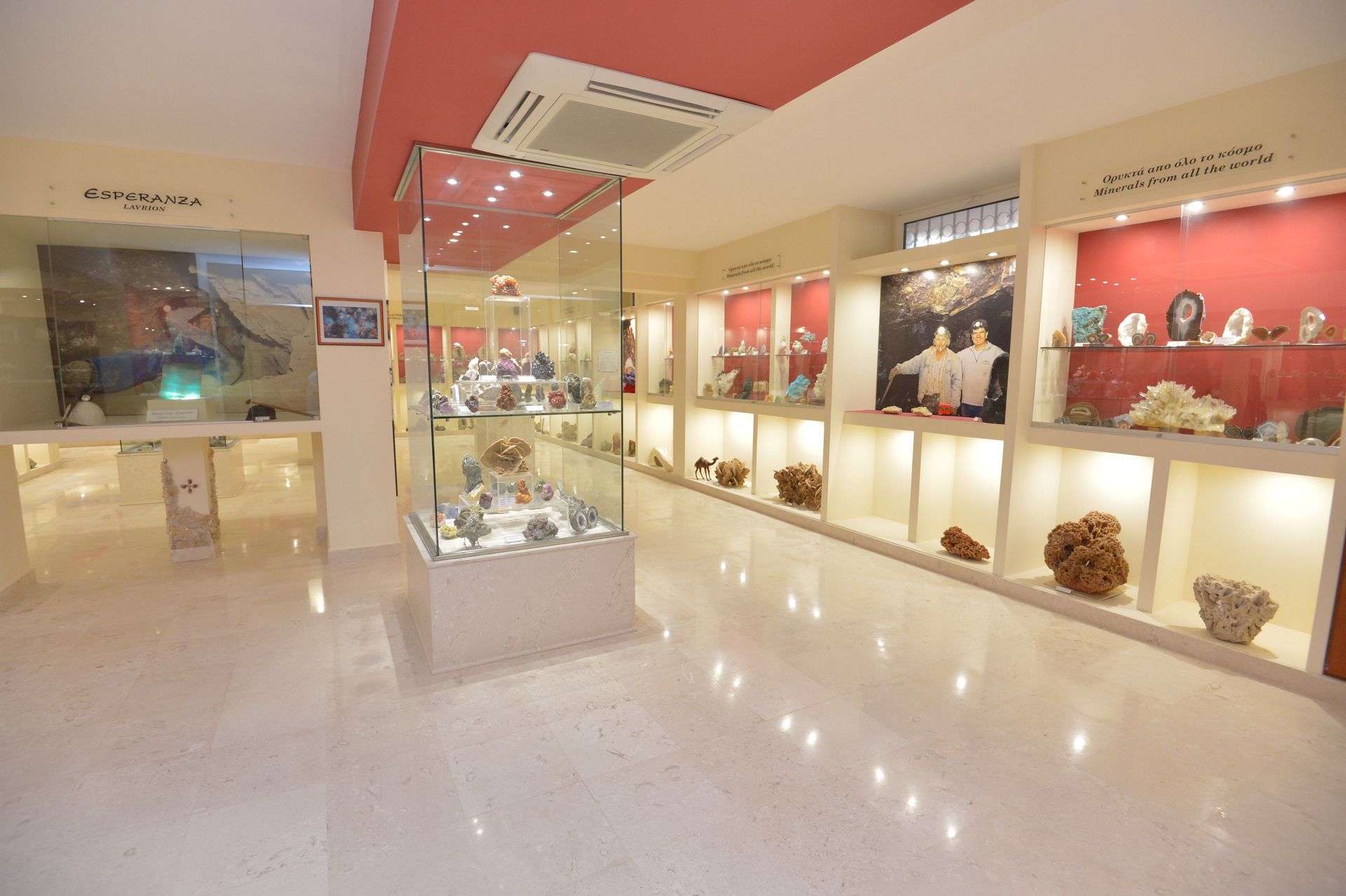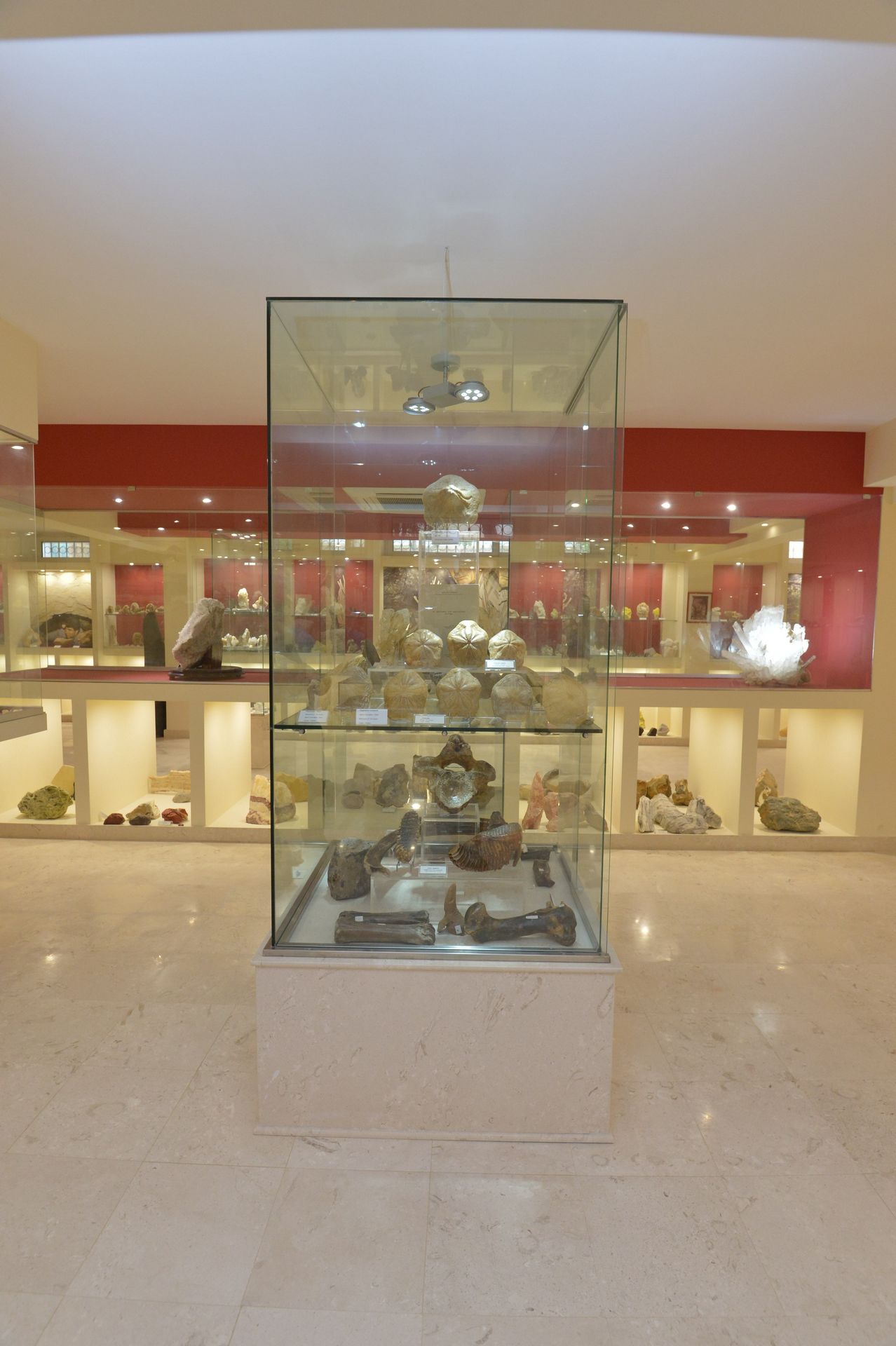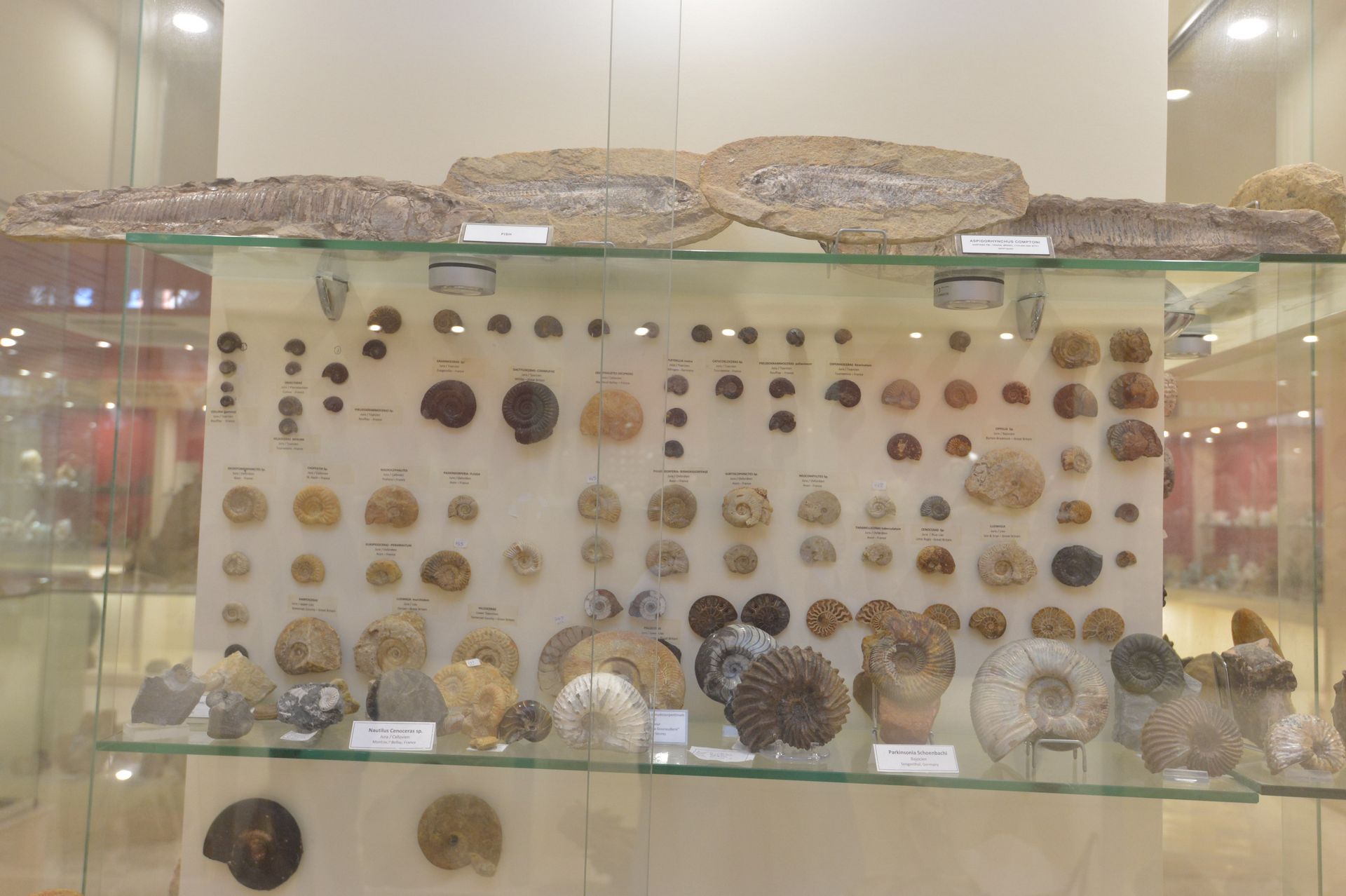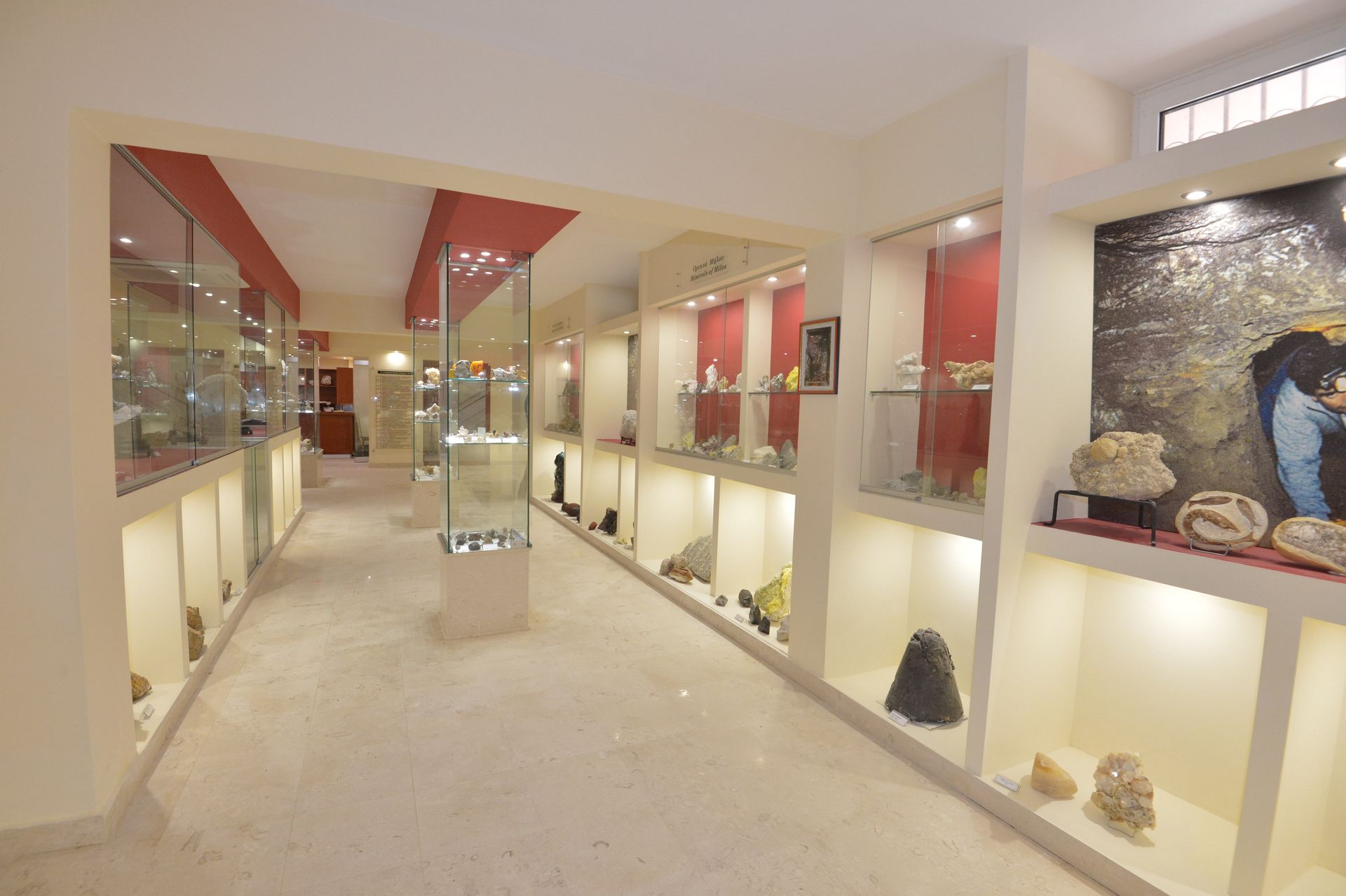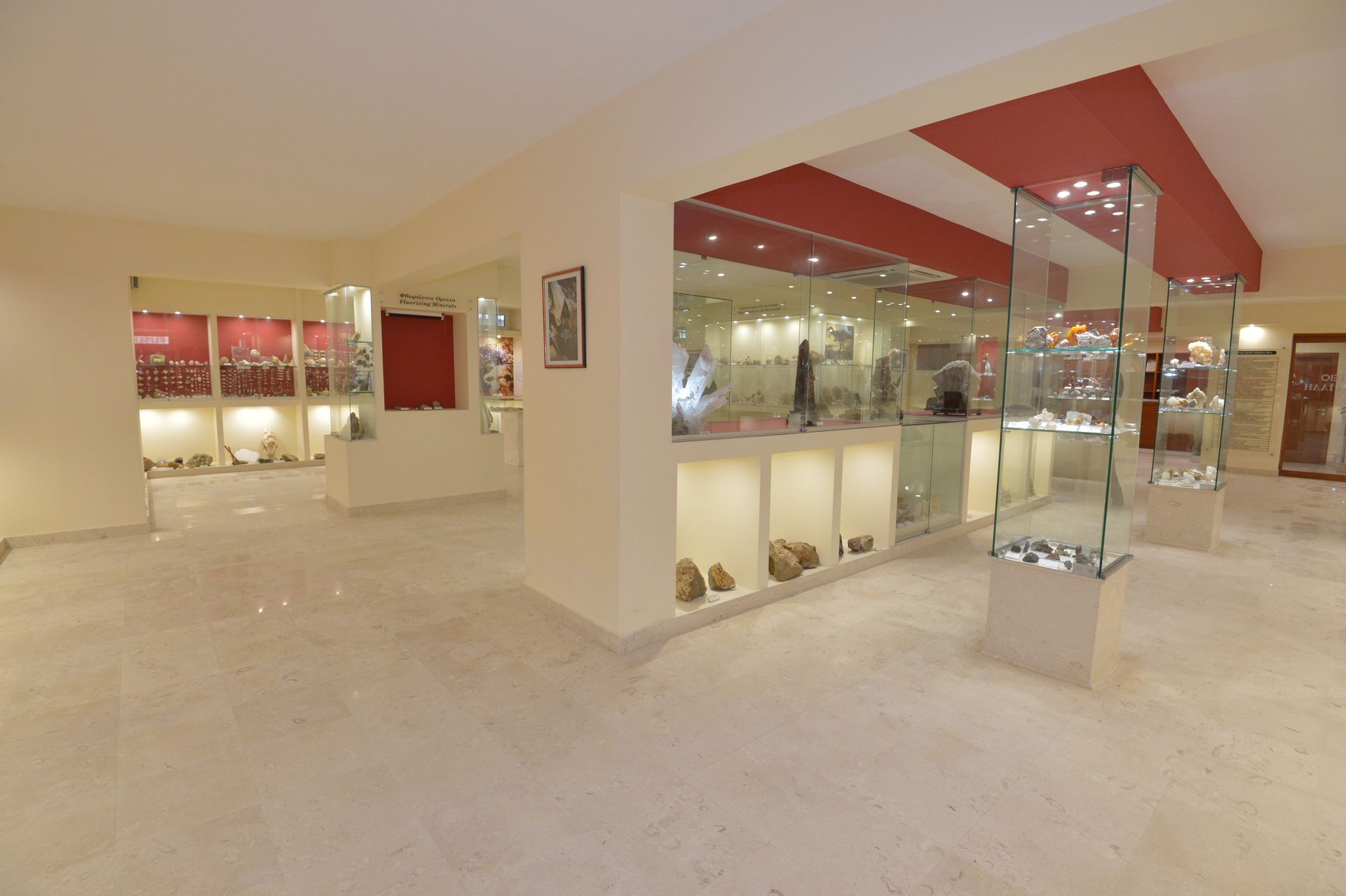Stamatiadis Mineralogy and Paleontology Museum
One of the main ideas governing the launching and hosting of this Museum has been the desire to extend the mineralogical and paleontological experience way beyond the strict field of acquaintance with specific areas traditionally yielding minerals as well as harboring fossils.
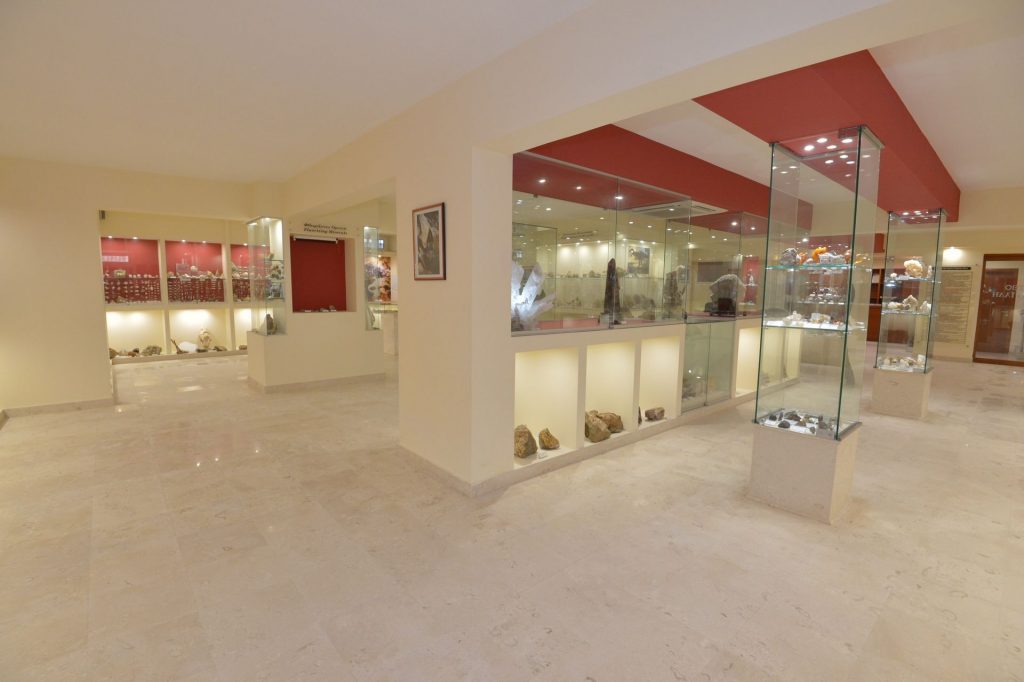

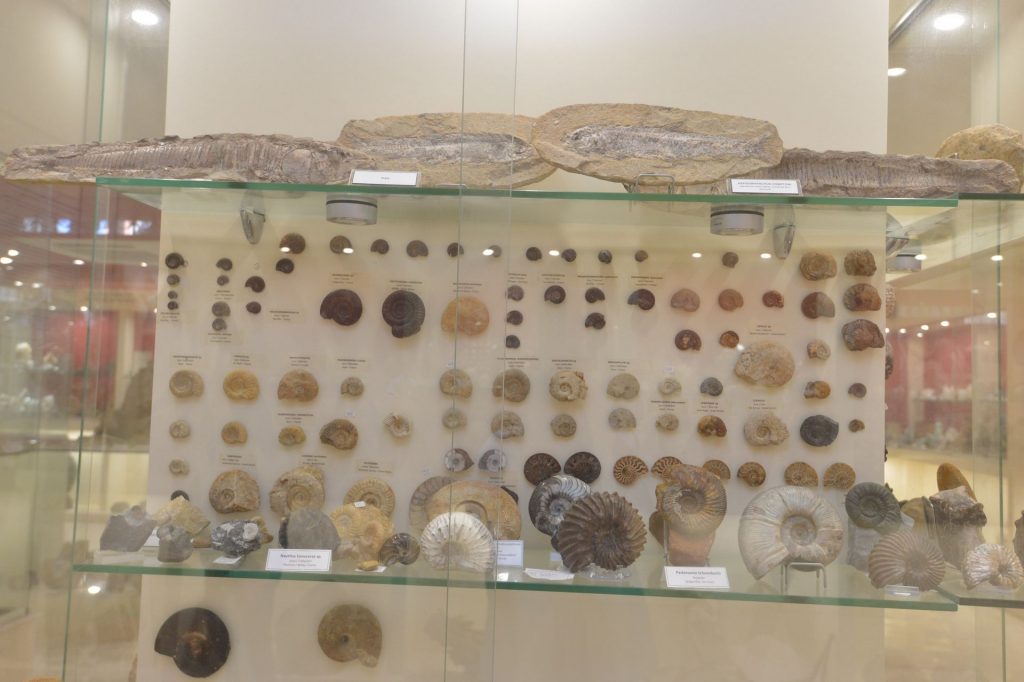
our history
Established in 2008, The Stamatiadis Mineralogy and Paleontology Museum has been the materialization of ideas nurtured and visions harbored by its founder, namely Polychronis E. Stamatiadis.
OBJECTIVES
This museum is meant to assist and proactively contribute to the promotion of the Science of Geology. Hosted within privately owned premises that, amongst other, comprise teaching and learning facilities, the museum aspired at providing knowledge while at the same time sensitizing people towards renewed respect of nature as the sole true source of life.
Moreover, this museum aims at familiarizing an increasingly wider public with the world of minerals so that more and more people – irrespective of age – be instigated to delver further in this fascinating world of fossils and precious stones, eventually giving up a little of their time in exchange for a widening of their historical knowledge on the way that this unique planet called Earth has developed over the centuries.
If there is one thing that most people agree upon, nowadays, it is that a great deal of problems tantalizing humans today, eventually degenerating to overwhelming stress and confusion factors, may to a great extent be attributed to our estrangement from our natural environment.
ESTABLISHMENT OF THE MUSEUM – THE RESPONSE TO A NECESSITY
The Stamatiadis Mineralogy and Paleontology Museum is the first of its kind, both in Rhodes and within the greater area of the Dodecanese. The absence of a museum such as this has in the past been repeatedly reproached to this part Greece, all the more since our country has made a reputation for the exceptional wealth of its soil. It is indeed to be wondered why up to the day of the launching of the Stamatiadis Museum initiative, the island of Rhodes – itself a place of renowned mineralogical and paleontological interest – had not had a museum of this nature. As is often the case, however eager, words rarely translated into practice.
One of the main ideas governing the launching and hosting of this museum has been the desire to extend the mineralogical and paleontological experience way beyond the strict field of acquaintance with specific areas traditionally yielding minerals as well as harboring fossils. This has from the very beginning been meant to be a learning experience aimed at whoever student or erudite, whether an experienced researcher or a greenhorn collector or even at that simple visitor with a wish to have a closer look and marvel at the creations of mother Nature, without having to travel the world to find them. Pupils will also find here valuable information and relevant documentation for their school projects and papers.
The museum’s doors will be open to those wishing to come – however often – to drink at the fountain of knowledge. A hall within the premises has been arranged to host film projections; featuring a big screen and appropriately equipped with all relevant infrastructure, this is where visitors will come to watch films on a vast array of topics relevant to nature and the environment.
A visit to the Stamatiadis Mineralogy and Paleontology Museum may indeed become an integral part of the teaching experience of whatever subject matters relevant to Geology, as student will have a first-hand impression of what they are taught.
OTHER GEOLOGY AND NATURAL HISTORY MUSEUM IN GREECE
Collecting and further putting on show – whether in the form of a temporary or a permanent exhibition – minerals and fossils to the interest of a wider public is something Greece has already seen happening in the past. As a matter of fact, collections such as those on show in Lavrion, in Kamariza, in Aghios Konstantinos (island of Milo), at the Kotsiomytis Museum (in Lygourion, Municipality of Asklepieion, in the Department of Argolida, in the Peloponese) as well as those on show at the museums of Lesvos and Crete, have been long appreciated and are repeatedly visited.
FINDING US
The Stamatiadis Mineralogy and Paleontology Museum is situated at 33, Heraklidon Avenue, in the municipality of Ialyssos (within 7km distance from the City of Rhodes and a mere 5km from the Diagoras International Airport).






the museum
The Stamatiadis Mineralogy and Paleontology Museum is housed on the ground-floor of PERLA MARINA, a modern hotel facility. The exhibits have been placed in showcases perimetrically arranged in a way such as to make the most of the 300 square meters over which the museum’s premises happen to extend. A series of wider showcases gave been placed in center of the perimeter. Such showcases feature minerals and fossils originating from various areas in Greece and the world over. Beautiful specimens of Azurite, Malachite, amazing Calcite and Galena along with several copper and lead-bearing minerals coming from such places in Greece, renowned for the mineralogical interest of their soil, as Lavrion, can bee seen on show at the museum.
Also to be admired here are minerals from the island of Milo – such as Sulfur, Obsidian, Perlite and Bentonite – as well as specimens of mineralogical riches yielded by the soils of Naxos and Serifos. Prassin, the greenish Quartz appreciated for its quality all over the world, Barite, Hedenbergite and Garnet are some of Sifnos island’s most known minerals.
The soil of Naxos is represented by such well-known minerals as Amaril and Margarite whilst several more specimens, originating from practically every area in Greece, complete the picture.
This collection is proud to host for the first time some of Rhodes most typical minerals, such as Artinite, Hydromagnesite, Serpentine, Quarz, Crocidolite, Selenite ea.
Several years of meticulous research by our team have resulted in the creation of a highly diversified collection of fossilized marine organisms originating from the Neogene Pliocene Epoch (1,8 – 5,3 million) as well as parts of fossilized tree trunks and vegetation elements (as is the case of a fossilized pine-apple).
A separate showcase has been reserved for the hosting of fossilized organisms of the most remote past – e.g. Radiolites, Hippurites from the area of Beotia (80 million years) and Ammonites from Epidaure (site of Ladinion), dating from the Triassic Epoch (230 million years). Also on show: fossilized fish from Brazil, from the Cretaceous Epoch (110 million years).
A special mention is to be made of the Trilobites, from Morocco, dating from the Ordovician Period (488.3 MYA – 443.7 MYA) as well as of the crocodile’s scull, from the Miocene Period.
PERLA MARINA APARTMENTS
This facility is cooperating with tour operator www.sunweb.nl . You also can contact us directly for bookings all year round at www.perlamarina.gr or info@geomuseum.gr
Metallurgy in Greece
Mining activities in Greece were a reality already in Prehistoric times. As a matter of fact, the extraction and exploitation of minerals came to be a major contribution to the birth and the flourishing of some of the most amazing civilizations this area has known. It is no less of a fact, however, that whatever information available on prehistoric times – essentially between the year 2.500 and the year 1.125 B.C. – are at best rudimental.
Whatever the case, the existence of gold had, already towards the end of Prehistoric times, been recorded, especially in regions of north Greece (Macedonia, Thrace, Thassos) both in the forms of integral pieces and in the form of alluvial deposits, so much as for researchers to associate gold with the
opening of the first, organized mines in the Hellenic area. Although gold was already widely used during the Minoan and Mycenaean times, the origins of this precious material at the time remains unknown.
If anything, it is certain that gold was also imported from other areas, mostly in Asia Minor and Egypt, which is quite understandable, given the intensity of trading activities and commercial exchanges in the area, activities brought to admirable highs at the times of the Hellenic Civilization. Apart from gold, other valuable minerals such as silver, copper, lead and iron were also located and extracted in various areas throughout Continental Greece and the Greek Islands.
In the centuries that followed (1.125 BC through to 800 BC) working with minerals – already developed during the Minoan times – flourished to a level such as to boost the demand for such materials as gold, silver and copper, to unprecedented highs. It is worth noting that gold is a material repeatedly mentioned in Homer’s Iliad and Odyssey.
The dawn of the 8th century BC saw the creation and development of several mining centers in such areas as the ranges of Rodopi and Paggaeon, Lavrion, the islands of Thassos, Kythnos, Serifos, Sifnos ea. During that time, the island of Cyprus was already active in the production of copper and silver in considerable quantities.
Among the numerous mining and metallurgy centers in the Hellenic area of the time, it is Lavrion that, according to the unanimous conclusion of practically all researchers of the time, held the leading position, both in terms of the intensity and the duration of relevant activities and in terms of the surprisingly advanced, for the time, mining and metallurgical practices developed and applied in this area, all along the many years of presence in this domain. Such conclusion is also further corroborated through the valuable and often spectacular findings unearthed by archaeologists delving into the era and the area.
As a matter of fact, practices and techniques developed by ancient Greeks within the context of their mining and metallurgical activities have earned general admiration. Throughout the period between the 7th and the 1st century BC, the mines at Lavrion are estimated to have yielded at least 3.500 tons of silver and 1.400.000 tons of lead. Production in such materials reached its peak during Classical Times – the very era dominated by such prominent figures as Themistocles and Pericles.
That the intensification of silver production at Lavrion contributed to Themistocle’s launching of the project of building enough trireme vessels for the Athenian fleet to beat the Persian naval forces at Salamis, in the year 480 BC – opening the way for the establishment of the Athenian predominance and Pericles’ Golden Era – is a fact generally admitted by historians.
Mining activities at Lavrion are believed to have come to a stop some time in late 1st century BC. By then, however, and more specifically in mid 4th century BC, King Philip the Second, of Macedonia, had launched an intensive exploitation of gold and silver mines already active in the mountain range of Paggaeon, thereby triggering the creation of an Empire and essentially paving the way for his son and heir Alexander the Great to embark on his famous Eastern Campaigns (334 – 323 BC).
The influence that mining and metallurgical activities have had, on the development of a great civilization as well as their contribution to the consolidation of the power and aura of ancient Greece can, among other, be reflected on the many feats of Pericles’ Golden Era, the wealth of Athens and later that of Pella as well as on the reverberation of Greece as a universal symbol of spiritual and material predominance.
The secret behind the feats of ancient Greek miners and metallurgists was indeed the power of their intellect, expressed and manifested through their commitment to a relentless, admirable and inspired pursuit of their destiny.
CONTACt
- Leoforos Irakleidon 33 Ialisos Rhodes
- 22410 90201
- info@geomuseum.gr
GALLERY
ACKNOWLEDGES
I make of it my duty to express my appreciation to certain persons, in acknowledgement of their help and support, namely my wife Annette Louise for the many years of patient seconding and loving assistance towards the outcome, which was the creation of the Stamatiadis Mineralogy and Paleontology Museum. My sons Manolis and Antonis, who took an active part in research and indeed unearthed many of the exhibits, within the context of expeditions both in Greece and abroad.

